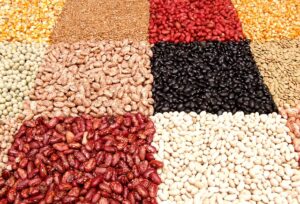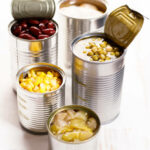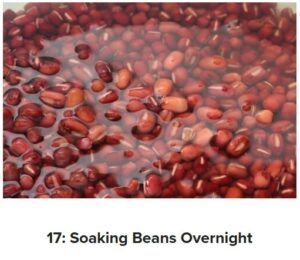Beans, Beans and More Beans
go.ncsu.edu/readext?1052379
en Español / em Português
El inglés es el idioma de control de esta página. En la medida en que haya algún conflicto entre la traducción al inglés y la traducción, el inglés prevalece.
Al hacer clic en el enlace de traducción se activa un servicio de traducción gratuito para convertir la página al español. Al igual que con cualquier traducción por Internet, la conversión no es sensible al contexto y puede que no traduzca el texto en su significado original. NC State Extension no garantiza la exactitud del texto traducido. Por favor, tenga en cuenta que algunas aplicaciones y/o servicios pueden no funcionar como se espera cuando se traducen.
Português
Inglês é o idioma de controle desta página. Na medida que haja algum conflito entre o texto original em Inglês e a tradução, o Inglês prevalece.
Ao clicar no link de tradução, um serviço gratuito de tradução será ativado para converter a página para o Português. Como em qualquer tradução pela internet, a conversão não é sensivel ao contexto e pode não ocorrer a tradução para o significado orginal. O serviço de Extensão da Carolina do Norte (NC State Extension) não garante a exatidão do texto traduzido. Por favor, observe que algumas funções ou serviços podem não funcionar como esperado após a tradução.
English
English is the controlling language of this page. To the extent there is any conflict between the English text and the translation, English controls.
Clicking on the translation link activates a free translation service to convert the page to Spanish. As with any Internet translation, the conversion is not context-sensitive and may not translate the text to its original meaning. NC State Extension does not guarantee the accuracy of the translated text. Please note that some applications and/or services may not function as expected when translated.
Collapse ▲ We hear a lot these days about the value of plant protein. One of the easiest and least expensive plant protein is beans. The variety is endless. Some of the more common include black, cranberry, Great Northern, kidney beans, garbanzo and pinto beans.
We hear a lot these days about the value of plant protein. One of the easiest and least expensive plant protein is beans. The variety is endless. Some of the more common include black, cranberry, Great Northern, kidney beans, garbanzo and pinto beans.
The US Dietary Guidelines for Americans 2025 recommends that we should eat one to three cups of beans each week. In addition to the protein and fiber, beans are naturally fat free, sodium free and cholesterol free.
Beans can be purchased in two forms: in cans or dried. There are pros and cons of
each type.
Canned beans save time.  They require no soaking, rinsing or cooking. Easy peasy. But they do contain sodium. Each ½ cup of canned beans contains 200 mg of sodium. Rinsing can remove about 1/3 of this sodium. Each can of beans contains about 1.75 cups of beans.
They require no soaking, rinsing or cooking. Easy peasy. But they do contain sodium. Each ½ cup of canned beans contains 200 mg of sodium. Rinsing can remove about 1/3 of this sodium. Each can of beans contains about 1.75 cups of beans.
Dried beans are less expensive. The Bean Institute has done the comparisons and
dried beans are about 1/3 the cost of the canned beans. A great savings if you’re
eating beans several times a week. Preparing dried beans will take time, but most of it is non-active. Doing-it-yourself is also a way to get beans without the added salt or
sodium. Salt is not required when cooking beans, so it can simply be left out. Also,
once cooked, beans can be frozen for the convenience of ready-to eat for soups, stews and chili. Each pound of dried beans yields about six cups of cooked beans or the equivalent of 3.5 cans of beans.
If you’ve never done it before, here are some basic instructions for cooking dried beans. It’s easy peasy.
The inactive part of preparing beans is the soaking. Soaking beans allow the dried
beans to absorb water. While the beans are soaking, they are doubling to tripling in
size. (Note: Lentils, green split peas and black-eyed peas do not need to be soaked.)
Start by picking through the beans and rinse. Look for and discard any discolored or
shriveled beans or stones and twigs you may find in the batch. Beans can be soaked with hot or cold water.
HOT SOAK— Using this hot method reduces the cooking time and also helps to
dissolve some of the starches that cause intestinal discomfort and gas. In a large pot
add 10 cups of water for each pound of dried beans. Heat to boiling, boil 2-3 minutes.
Remove from heat, cover and soak for up to four hours. To help reduce gas, pour off
the soaking water and rinse the beans before cooking. Don’t soak the beans at room
temperature for more than four hours.
COLD (and EASY) SOAK–use 10 cups of cold water for each pound of dried beans
and allow to soak for eight hours or overnight. It’s best to put these beans in the
refrigerator while soaking.
After soaking, cook the beans. Use fresh water over medium heat and a gentle simmer. It’ll take 30 minutes to two hours depending upon the variety of beans. Make sure the beans are covered with water during cooking. When ready, they should be tender—but not mushy. Drain and use in recipes calling for canned or cooked beans.
Don’t add anything but water during the cooking. Adding acid ingredients like lemon
juice, vinegar, tomatoes, catchup or molasses to the beans can prevent the beans from becoming tender. If you are adding salt to your beans, don’t do it till after cooking as this too will affect the bean’s ability to cook and soften. Some folks also suggest adding baking soda to soften the beans. This will destroy the vitamin B in the beans and may also give them an off flavor. Only add these extra ingredients after the beans are fully cooked.
Some people avoid beans because of the potential for intestinal concerns. This gas
problem is caused by non-digestible fermentable fiber in the beans. To prevent this, eat more beans and drink more water. Start by eating a small amount (two-to-four
tablespoons) every day and gradually increase as your body gets comfortable with
them. Another trick, if preparing dried beans, is to change and discard the soaking
water and rinse the beans before cooking, this helps remove that gas causing
substances.
 The safety of soaking beans (room temperature or not) was the topic of Risky or Not podcast #17. This is a short podcast produced by Professor Ben Chapman from our NC State Cooperative Extension and Dr. Don Schaffner from Rutgers. You can find the podcast and additional episodes (they have over 600) that discuss common (and some not-so-common) food safety questions at riskyornot.co (yes, that’s co not com).
The safety of soaking beans (room temperature or not) was the topic of Risky or Not podcast #17. This is a short podcast produced by Professor Ben Chapman from our NC State Cooperative Extension and Dr. Don Schaffner from Rutgers. You can find the podcast and additional episodes (they have over 600) that discuss common (and some not-so-common) food safety questions at riskyornot.co (yes, that’s co not com).
Med Instead of Meds Recipes:
Syracuse is a Family and Consumer Science team member and can be reached at clsyracu@ncsu.edu or at N.C. Cooperative Extension, Brunswick County Center 910-253-2610.



